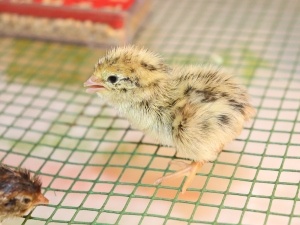
Raising quail chicks can not only be very fun, but it can also be very fascinating as well.
There are a few things you need to know before raising these tiny birds including any problems you may encounter when starting to raise them
This article explores the problems that you should look out for when raising quail chicks
Table of Contents
Quail chick leg problems:
Animals are generally quite hardy and won’t want you, or their flockmates, to know if there are suffering from an illness or an injury.
Unfortunately, this can turn dangerous, so, we’re equipping you with some knowledge about these birds.
Here are a few problems you may run into when raising quail chicks.
Spraddle leg:
This is a deformity that is common in all types of birds, quail included. It is easy to get and thankfully it is easy to get rid of.
Spraddle leg can be caused by a variety of things including a leg injury, brooder overcrowding, temperature fluctuations during incubation, and slippery flooring.
The condition causes your bird’s legs to twist out and slide flat keeping the bird from being able to walk.
What to do:
This condition can be fixed quite easily, if not fixed your bird may be permanently disfigured.
You can treat this by bracing the bird’s legs up straight using something like tape, rubber bands, yarn or bandaids. The bird’s legs will get stronger and maintain this position as it grows.
In addition to this, you can add paper towels or a rubber shelf liner in your bird’s brooder where it frequents.
Avoid using newspapers in the brooder as flooring as this is slippery.
Curly toe paralysis:
Another foot condition that your quail chick may start to suffer from is curly toe paralysis.
Just as the name suggests, this condition causes your little bird’s toes to curl in and keep the bird from being able to walk
Curly toe paralysis can be caused by improper incubation temperature settings when the bird was growing, it can be caused by an illness called Marek’s disease, or, it can develop if your bird has a vitamin B2 deficiency.
What to do:
This condition is quite serious and if the disease is left to progress it can kill the bird through starvation as the bird won’t be able to get to food and eat.
Treatment for this condition in your quail chicks involves giving the bird a vitamin B2 supplement.
Adding other nutrients into your baby’s quail diet, like vitamin E, Vitamin K, Vitamin D3, calcium, manganese, and phosphorous will also help as these help with bone formation.
You can also support the baby chick’s feet using splints or tape to keep the feet in the correct position. The baby’s feet will grow strong and stable in the correct position if taped correctly.
Keep this condition from developing in new birds by making sure that the temperature settings during incubation are correct
Injury:
These little birds can become injured very easily, unfortunately, the bird will try to hide signs of being injured so you’d need to keep an eye out in case the bird becomes injured.
What to do:
If your baby quail is injured you’d need to keep the injury from becoming infected and make sure that the bird doesn’t make the injury worse by using the leg.
Keeping the injury clean will keep it from becoming infected.
It is also not recommended that you give the bird pain medication as this will make the bird think that its injury is healed, and, cause the bird to use the leg and injure it even more
If you enjoyed this article then you may also be interested in other bird related articles. Here are some articles that you may be interested in: Baby Chickens Vibrating, Baby Chick Cries When Pooping, Quail Chick Not Growing, Quail Chick Feet Problems, Day Old Chick Not Eating, 5 Day Old Chick Not Eating, 2 Week Old Chick Not Eating, Lethargic Quail Chick, Baby Chick Not Moving Much

